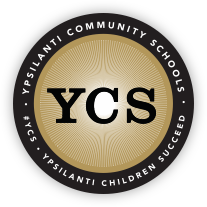
In This Issue:
1. Doug Lemov on combining synchronous and asynchronous pedagogy
2. Why remote learning has been a boon for some students
3. School closure as an opportunity for young adolescents to flourish
4. A post-pandemic silver lining for high schools?
5. Addressing "Covid slide" in the fall
6. Emotionally intelligent leadership in a changing world
7. Four ways to be a leader when the chips are down
8. The surprising role of SAT scores in college admission
9. What it takes to implement developmental word study
10. The virtues of a clear mission
11. Makerspaces: possibilities and caveats
12. Short items: (a) Talking to young people about Covid-19; (b) Online writing prompts
Quotes of the Week
"Students only learn when they are focused, engaged, and putting in effort."
Michael Petrilli (see item #4)
"If there is one thing I know about struggling readers, it is that they get tired of struggling."
Jacqueline Leathers in "The Power of Series Books for Struggling Readers" in The Reading Teacher, May/June 2020 (Vol. 73, #6, p. 813); Leathers can be reached at jleathers@metrocast.net.
"T oo often, research does not inform classroom practice, and when it does, it can take up to 50 years to make an impact."
Nora Vines, Jennifer Jordan, and Amy Broemmel (see item #9)
"How many of us are walking around with unhealed emotional wounds inflicted in junior high? And can we really trust our memories and the stories we've told ourselves about those memories?"
Shannon Hale in a review of And Then They Stopped Talking to Me: Making Sense of Middle School by Judith Warner in The New York Times, May 10, 2020
"Appropriate displays of emotion can be an effective tool for change, especially when balanced with poise. Maintaining this balance lets people now that although the situation is fraught with feelings, it is containable."
Ronald Heifetz, Marty Linsky, and Alexander Grashow (see item #6)
1. Doug Lemov on Combining Synchronous and Asynchronous Pedagogy
In one of his online "field notes," author/educator Doug Lemov notes the advantages of two modes of learning that are top of mind these days:
- Synchronous – Builds connections with students, develops their habits of engagement and accountability, and allows the teacher to check for understanding in real time.
- Asynchronous – Allows students to work at their own pace on deeper assignments.
However, says Lemov, with synchronous classes, teachers are limited in the depth of learning they can assign, and too much Zoom work is exhausting. With asynchronous learning, it's hard to know how students are doing and whether they need help.
- Snider kicked off the lesson with an engaging 20minute synchronous lesson on the novel the class was reading, playing an audiobook of a passage.
- He then set up students for independent work with a cue ("Get ready for a plot twist...") and a provocative question.
- He kept the Zoom connection live and students remained on the line as they worked (some turned off their cameras).
- The directions remained on the screen for students to review.
- Snider monitored students' work, giving brief compliments, letting them know he was available to help ("I'm here if you need me"), and inviting them to send him a chat if they needed more time.
- Then he brought the class back together to discuss how they did and review answers.
"(A)Synchrony in Action: Eric Snider's Hybrid Lesson" by Doug Lemov in Teach Like a Champion, May 31, 2020
2. Why Remote Learning Has Been a Boon for Some Students
In this Edutopia article, Nora Fleming reports on conversations with dozens of teachers who have been surprised that some students who were not doing well before the pandemic are thriving now: for example, class clowns, students who are hyperactive, shy, or highly creative. "It's been awesome to see some of my kids finally find their niche in education," said a California high-school teacher.
Sleep – "I have the time to sleep eight hours a night every night," said a California high-school junior. Enough said."
"Why Are Some Kids Thriving During Remote Learning?" by Nora Fleming in Edutopia, April 24, 2020
3. School Closures As an Opportunity for Young Adolescents to Flourish
In this New York Times article, author Judith Warner says that early adolescents seem to be hard-wired "to bond with friends, flirt, judge, rank, rebel, and separate into in-group and out-group peer hierarchies... Adults don't tend to much like kids of middle-school age. They roll their eyes at us and snarl. They watch us with a gaze newly awakened to all our hypocrisies and foibles."
But Warner is not convinced that meanness, social drama, and alienation from adults are inevitable for this age group. "Middle school is a time when all sorts of new abilities kick in," she says: "new powers of observation, critical thinking, reason, and reflection. Believe it or not, there's even a new capacity for empathy, and a strong sense of injustice."
And all these latent abilities, Warner believes, can be unleashed during the pandemic. She's hearing about kids who, not long ago, "were accusing parents of trying to ruin their lives by keeping them home," but are now reading, pursuing new interests, researching the history of plagues, taking music lessons, inventing games (including Covidopoly), rediscovering old friends, even talking on the phone. And some middle-schoolers are finding their teachers' online instruction not bad.
The key to some kids' good side being unveiled during the pandemic, Warner believes, is less pressure. But not everyone gets that. "Schools need to cut them a break," she says. "Assign less homework. Let kids take classes pass-fail, as many colleges are doing. Make teachers and guidance counselors available for Zoom, Facetime, or even just old-fashioned phone calls for support." Of course some boundaries are needed to keep the negatives under control: for starters, how about schools and parents agreeing on limiting social media to certain times of day?
"Ease the Pressure on Our Middle Schoolers" by Judith Warner in The New York Times, May 3, 2020; Warner's new book is And Then They Stopped Talking to Me: Making Sense of Middle School (Crown, 2020)
4. A Post-Pandemic Silver Lining for High-Schools?
In this Education Gadfly article, Michael Petrilli says the traditional 6-7-hour high-school day "has been crushing teenage souls for generations... Surveys have long shown that teenagers spend most of their day bored, zoned out, and only pretending to listen." The daily grind of getting up way too early and trudging from one class to another is in stark contrast to many students' lively engagement in after-school sports, band, theater, and jobs – and bears little resemblance to college, where there are only about 15 hours of in-person class time a week and lots of open time for independent work, group projects, office hours, and more.
"Half-Time High School May Be Just What Students Need" by Michael Petrilli in The Education Gadfly, May 27, 2020; Petrilli can be reached at mpetrilli@fordhaminstitute.org.
5. Addressing "Covid Slide" in the Fall
In this Education Week article, Heather Hill (Harvard University) and Susanne Loeb (Brown University) explore how schools might deal with students' predicted learning loss when schools reopen. Of course teachers deal with "summer slide" every year, reviewing what was supposed to have been learned the previous year and spiraling the curriculum to fill in forgotten or missed knowledge and skills. But learning gaps will be bigger after three months of remote learning, and will vary significantly depending on home advantages, how well schools managed online learning, and the degree of trauma experienced by students. Gaps may be especially problematic for the youngest students, who are usually on a steep learning curve with reading, writing, math, and social skills.
Track down and reach out to students who disengaged from instruction while schools were closed, and make strenuous efforts to get them back into the fold.
Have teachers at each level pass along to the next grade-level team what was not covered during remote learning.
Have all teachers immediately check in on students' emotional state and conduct quick, classroom-based assessments to get a handle on what students know and can do.
Launch into grade-level content right from the start, rather than repeating material from the previous grade; missing knowledge and skills would then be assessed and backfilled in context.
Provide effective tutoring for students who are struggling with new material – but don't pull students out of core classes, which will make them fall further behind.
Make the best use of instructional time throughout the year. This includes minimizing student and staff absences, cutting down interruptions to class time, keeping students working productively when they are not in school, and hiring effective substitutes.
"How to Contend with Pandemic Learning Loss" by Heather Hill and Susanne Loeb in Education Week, May 27, 2020; the authors are at heather_hill@gse.harvard.edu and loeb@brown.edu.
6. Emotionally Intelligent Leadership in a Changing World
In this Harvard Business Review article, Ronald Heifetz and Marty Linsky (Harvard Kennedy School) and Alexander Grashow (Good Wolf Group) say the current health and economic crises will bring about permanent changes, demanding revised leadership practices. Specifically, leaders need to work with colleagues on adopting new practices, distribute leadership in order to draw on collective intelligence, and lead in emotionally intelligent ways. On the last point, Heifetz, Linsky, and Grashow suggest:
Find sanctuaries where you can regain perspective. Stepping away in some way provides a chance to see whether you understand the work colleagues are doing – and if you're asking too much of them.
Debrief your workday with a confidant. Ideally this person is outside your organization and cares more about you than the issues at stake. You might speak with more than one confidant.
Bring more of your emotional self. "Appropriate displays of emotion can be an effective tool for change, especially when balanced with poise," say Heifetz, Linsky, and Grashow. "Maintaining this balance lets people know that although the situation is fraught with feelings, it is containable."
Don't lose yourself in your role. "Achieving your highest and most noble aspirations for your organization may take more than a lifetime," conclude the authors. "Your efforts may only begin this work. But you can accomplish something worthwhile every day in the interactions you have with the people at work, with your family, and with those you encounter by chance. Adaptive leadership is a daily opportunity to mobilize the resources of people to thrive in a changing and challenging world.
"Leadership in a (Permanent) Crisis" by Ronald Heifetz, Marty Linsky, and Alexander Grashow in Harvard Business Review, Summer 2020 (pp. 10-17); Heifetz can be reached at ronald_heifetz@hks.harvard.edu, Linsky at marty_linsky@hks.harvard.edu.
7. Four Ways to Be a Leader When the Chips Are Down
In this Harvard Business School article, Robert Sutton (Stanford University) says two dynamics are often at work in boss-employee relationships. First, "People who gain authority over others tend to become more self-centered and less mindful of what others need, do, and say." Second, subordinates "devote immense energy to watching, interpreting, and worrying about even the smallest and most innocent moves their superiors make."
Sutton believes it's possible for good leaders to avoid this "toxic tandem" by taking four basic steps:
Increasing understanding – "If predictability is about what will happen and when," says Sutton, "understanding is about why and how." Leaders need to give detailed explanations for why major changes are being made. Humans react negatively to unexplained events and do much better if they have information that's "simple, concrete, and repetitive."
"How to Be a Good Boss in a Bad Economy" by Robert Sutton in Harvard Business Review, Summer 2020 (pp. 82-89); Sutton can be reached at bobsut@stanford.edu.
8. The Surprising Role of SAT Scores in College Admissions
In this New York Times article, author Paul Tough notes the growing number of colleges (most recently the University of California) that no longer require applicants to submit SAT and other test scores. Tough says this is a positive development, which is surprising. Why? Because it's often argued that standardized tests level the playing field for disadvantaged students – that tests help colleges find brilliant low-income students in below-the-radar high schools.
That's mostly not true, says Tough. In fact, tests tilt the playing field even more in favor of economically advantaged students. "The best predictor of college success overall is a simple one," says Tough: "high-school grades. That's because an impressive GPA shows a combination of innate talent and hard work, which is the formula for being successful in college. Significantly, GPA is much less correlated with family SES than test scores.
- Strivers – Students with impressive GPAs, reflecting hard work and diligence in high school, but comparatively low standardized test scores;
- Slackers – Students with lower GPAs but relatively high test scores; these students are "selfassured test takers," says Tough, "who for one reason or another didn't put as much effort into high school."
A study by the College Board found that Strivers were much more likely to be female, black, Latina, working class, or poor; Slackers, on the other hand, were more often white, male, and well-off. Most important, Strivers did better in college than Slackers, with slightly higher freshman grades and retention rates.
So it's very clear, Tough concludes, which students will benefit most from eliminating standardized test scores as part of the college admission process.
"Go Ahead, California, Get Rid of the SAT" by Paul Tough in The New York Times, May 21, 2020
9. What It Takes to Implement Developmental Word Study
In this article in The Reading Teacher, Nora Vines, Jennifer Jordan, and Amy Broemmel (University of Tennessee/Knoxville) say, "Too often, research does not inform classroom practice, and when it does, it can take up to 50 years to make an impact." They believe that's the case with spelling instruction, with many teachers continuing with the "tried-and-failed" practice of weekly, whole-class, one-size-fits-all spelling lists. The research supports a quite different approach: developmental word study – students work with customized lists, investigate word features, patterns, and meanings, and develop a deeper understanding of how spelling works to represent sound and meaning. The goal, say Vines, Jordan, and Broemmel, is for students to develop a "knowledge of words they can apply to their own contextual reading and writing."
Based on their work with second-grade teachers in a high-poverty rural school who were willing to "flip the script," the researchers suggest seven key practices for successfully implementing developmental word study:
Being good assessors – The key here is using a developmental spelling inventory to identify what students know, leveraging their strengths, continuously assessing progress, and using data to fine-tune instruction. This is the opposite of the common practice of focusing on deficits, which doesn't provide helpful entry points for instruction.
Differentiating – Teachers use assessments to form and tweak student groupings, evaluate which instructional methods are working, and adapt instruction as students progress.
Deciding on instructional routines – Teachers make good decisions on whole-class modeling, mini-lessons, group work, learning stations, and individual and independent work. "We cannot reiterate enough," say the researchers, "that we did not find one right way to effectively implement word study."
Integrating authentic tasks – Students need to use the words they're learning in reading, writing, projects, and hands-on activities.
Critically reflecting – Teachers learn by observing one another's classes and discussing what they believe is working – and what isn't.
Embracing messiness – Developmental word study involves letting go of long-standing beliefs about how spelling should be taught and what a classroom should look and sound like. There's less structure, more group work, more interaction, and, the authors believe, more student understanding and learning.
"Reenvisioning Spelling Instruction: Developmental Word Study Nonnegotiables" by Nora Vines, Jennifer Jordan, and Amy Broemmel in The Reading Teacher, May/June 2020 (Vol. 73, #6, p. 711-722); the authors can be reached at nvines@utk.edu, jjorda15@utk.edu, and broemmel@utk.edu.
10. The Virtues of a Clear Mission
"The principalship is a most unique position," says author/consultant Kenneth Williams in this article in All Things PLC. When he first became a school leader 20 years ago, Williams felt overwhelmed by the "sheer responsibility" he had, the number of priorities and stakeholders, and the fact that each day was, as one colleague put it, "one constant interruption." But a workshop with Richard DuFour a few years earlier had given Williams a clear sense of mission, which provided him and his colleagues three gifts:
Clarity of purpose – "Ensuring high levels of learning for all kids, regardless of background, was our compelling why," says Williams, "and it served as our school's North Star. Every decision we made was done in the context of our shared purpose." The school went from a Babel of 65 "positive but different purposes" to one unifying purpose.
A theory of action – Teacher teams focused on DuFour's four key questions: (a) what do we expect all students to know and be able to do? (b) how will we know when they've learned the essential content? (c) how do we respond when they haven't learned the essential content? and (d) how do we respond when they have learned the essential content? "Our commitment to answer these questions made clear the processes we needed to put in place," says Williams:
- Assembling a "guiding coalition" to move the work forward schoolwide;
- Building shared knowledge around the cycle of teaching, learning, and assessment;
- Establishing collaborative teacher teams;
- Creating time for teams to meet;
- Helping teams establish SMART goals, both short and long-term;
- Blocking out time to accelerate the learning of struggling students – and enrich the learning of students who have exhibited mastery.
"The Three Gifts of Mission" by Kenneth Williams in All Things PLC, Spring 2020; Williams can be reached at unfoldthesoul@gmail.com.
11. Makerspaces: Possibilities and Caveats
In this article in Phi Delta Kappan, Kurt Salisbury (Midway Middle School, Texas) and Philip Nichols (Baylor University) define makerspaces as places where students "design or create projects using a variety of physical and digital tools" with an emphasis on "hands-on learning through imaginative tinkering and play." There's been a lot of enthusiasm for the idea over the last 16 years, but not all makerspaces have been successful, including some expensive, high-tech rooms that sit unused because teachers and students aren't sure how they fit in with standards and their schools' strategy. There has been some research on the potential of makerspaces, say Salisbury and Nichols, but not much about learning results.
- Projects – requirements are broad enough so students can have real ownership;
- Passion – students bring their interests and identities to the work;
- Peers – collaboration is a key component;
- Play – the climate is safe for experimentation, risktaking, and just plain fun.
Picking up on these principles, Salisbury and Nichols broaden the conventional understanding of makerspaces with two examples: middle-school math students competing to build catapults that can fire projectiles the greatest distance, and high-school humanities classes restructuring each curriculum unit (including one on religious freedom) into a "playlist" of activities organized around the school's design process: discover, design, develop, and deliver.
Excited as they are about the potential of makerspaces in schools, Salisbury and Nichols conclude with these cautions and takeaways. First, it's not about the space or tools, and a lot of money can be misspent if that's the focus. Second, some students may be disoriented or overwhelmed by such an open-ended learning environment. Finally, schools need to create alternative assessments. "Open-ended projects do not lend themselves to standardized evaluations," they say; "therefore, they open educators to reflection about how else we might understand students' learning."
"School MakerSpaces: Beyond the Hype" by Kurt Salisbury and Philip Nichols in Phi Delta Kappan, May 2020 (Vol. 101, #8, pp. 49-53); the authors can be reached at kurt_salisbury@baylor.edu and phil_nichols@baylor.edu
12. Short Items:
a. Talking to Young People About Covid-19 – This tip sheet from the Center for the Study of Traumatic Stress in Maryland has suggested scripts for explaining the pandemic to preschoolers, school-age children, and teens: what it is, how we protect ourselves, and how we protect people who are at risk.
Spotted in "How to Talk to Students About the Coronavirus Without Scaring Them" by Angela Duckworth in Education Week, May 27, 2020
b. Online Writing Prompts – The 826LA website has numerous suggestions to get students writing, organized by grades 1-5 and 6-12. "826LA" May 2020









